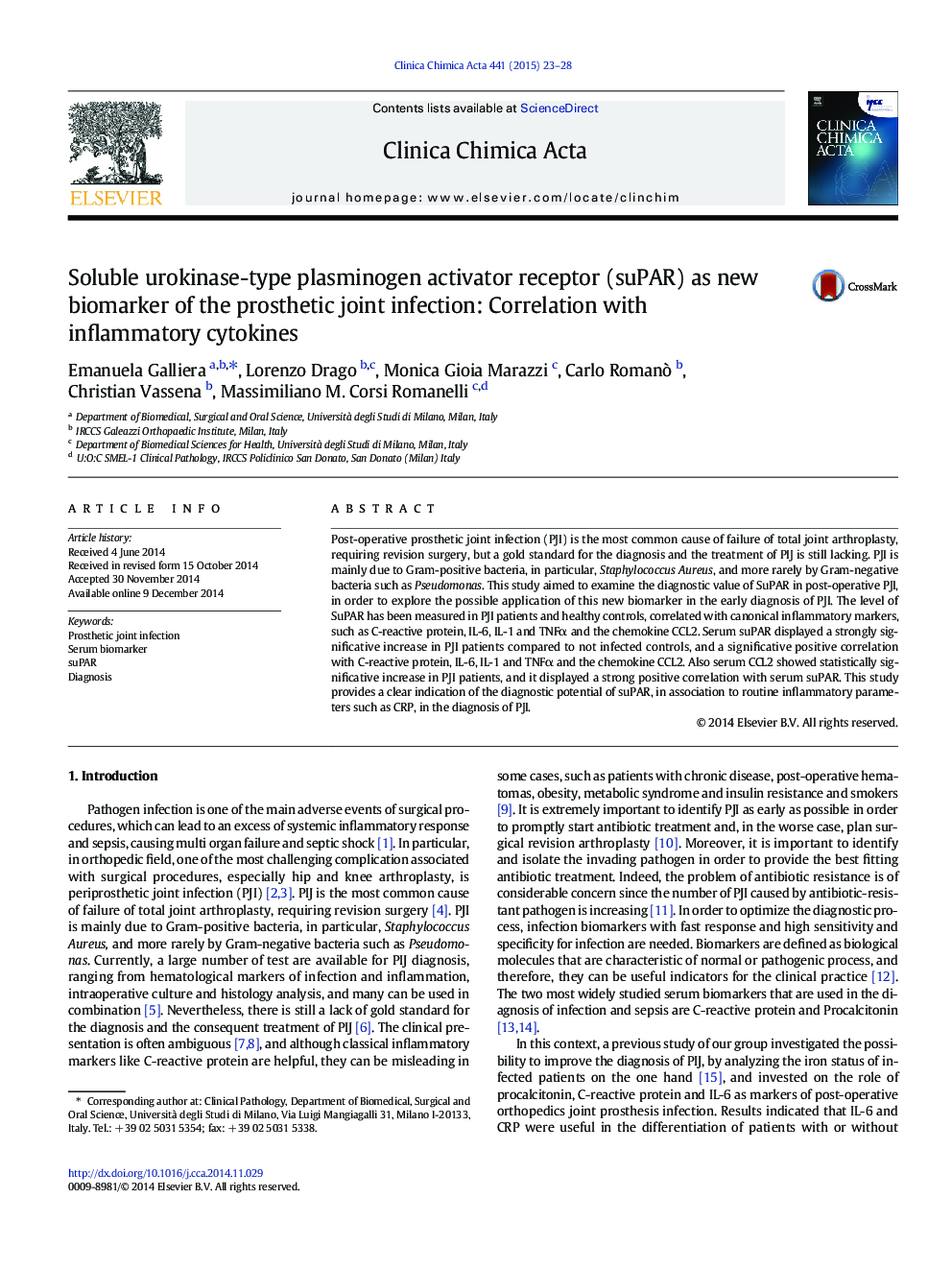| Article ID | Journal | Published Year | Pages | File Type |
|---|---|---|---|---|
| 1965338 | Clinica Chimica Acta | 2015 | 6 Pages |
•A gold standard for the diagnosis and the consequent treatment of PIJ is still lacking.•We investigated the diagnostic value of SuPAR in post-operative prosthetic joint infection.•suPAR correlated with inflammatory markers and the chemokine CCL2.•We indicated that suPAR can be a diagnostic tool for prosthetic joint infection detection.
Post-operative prosthetic joint infection (PJI) is the most common cause of failure of total joint arthroplasty, requiring revision surgery, but a gold standard for the diagnosis and the treatment of PIJ is still lacking. PJI is mainly due to Gram-positive bacteria, in particular, Staphylococcus Aureus, and more rarely by Gram-negative bacteria such as Pseudomonas. This study aimed to examine the diagnostic value of SuPAR in post-operative PJI, in order to explore the possible application of this new biomarker in the early diagnosis of PJI. The level of SuPAR has been measured in PJI patients and healthy controls, correlated with canonical inflammatory markers, such as C-reactive protein, IL-6, IL-1 and TNFα and the chemokine CCL2. Serum suPAR displayed a strongly significative increase in PJI patients compared to not infected controls, and a significative positive correlation with C-reactive protein, IL-6, IL-1 and TNFα and the chemokine CCL2. Also serum CCL2 showed statistically significative increase in PJI patients, and it displayed a strong positive correlation with serum suPAR. This study provides a clear indication of the diagnostic potential of suPAR, in association to routine inflammatory parameters such as CRP, in the diagnosis of PJI.
